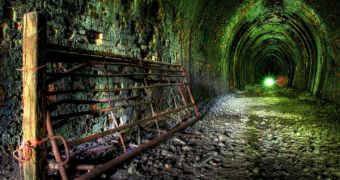Archaeologists from the University of Leicester discovered what appears to be the oldest known remnants of chemical warfare, in the Syrian city of Dura-Europos. According to the research, presented at the Archaeological Institute of America meeting by Simon James, more than 20 Roman soldiers met their demise in tunnels, suffocated by a putrid fume, which rendered them unconscious, and then killed them, in a large battle that historians know about only from digs. There are no written documents left of it, but that was common practice in Antiquity, when the winners erased all trace of the losers from written history.
Most likely, James says, the Persians attacking the city, which was heavily defended by the Romans, tried to tunnel their way underneath the massive walls, by extensive mining. In all likelihood, the Romans knew this, and decided to build counter-mines, so as to meet the Persians underground and destroy them. But the disposition of the 20 bodies, which were discovered around 1930, made researchers think that there was more to the story than the simple fact that two groups of soldiers met and fought underground.
They say that the narrow tunnels wouldn't have allowed for such a massive confrontation to end quickly, and with no casualties on the Persian side. Most likely, James says that the attackers used bitumen and sulfur crystals to ignite the tight confines. When they heard the Roman counter-mine getting near, they placed the incendiary mixture inside the tunnels and set it on fire, so as to generate chocking gases.
“The Persians will have heard the Romans tunneling and prepared a nasty surprise for them. I think the Sasanians placed braziers and bellows in their gallery, and when the Romans broke through, added the chemicals and pumped choking clouds into the Roman tunnel,” James adds.
“The Roman assault party were unconscious in seconds, dead in minutes. Use of such smoke generators in siege-mines is actually mentioned in classical texts, and it is clear from the archaeological evidence at Dura that the Sasanian Persians were as knowledgeable in siege warfare as the Romans; they surely knew of this grim tactic,” he says.
In the end, the Persians failed to reach the city via mines, but managed to break through the defenses and ransacked the place, killing almost everyone inside, and deporting the rest as slaves to the Persian Empire. The city was abandoned, and chronicles of what happened there around AD 256 disappeared, or were never written.

 14 DAY TRIAL //
14 DAY TRIAL //